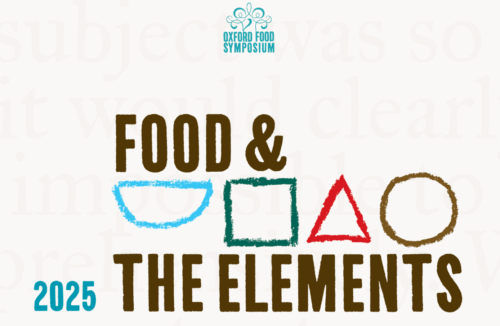More industry-sponsored research with predictable results
Once again, I am posting five food industry-sponsored studies with results that come out just the way the sponsor wants them to. Coincidence? Or something more serious? I am trying to remain open-minded. If you know of food industry-sponsored research that does not favor the sponsor’s interests, please send. As soon as I collect five, I will post.
Diets with high-fat cheese, high-fat meat, or carbohydrate on cardiovascular risk markers in overweight postmenopausal women: a randomized crossover trial. Am J Clin Nutr ajcn109116, 2015. doi:10.3945/ajcn.115.109116. Thorning, T.K., Raziani, F., Bendsen, N.T., Astrup, A., Tholstrup, T., Raben, A.
- Conclusion: Diets with cheese and meat as primary sources of SFAs [saturated fatty acids] cause higher HDL cholesterol and apo A-I and, therefore, appear to be less atherogenic than is a low-fat, high-carbohydrate diet. Also, our findings confirm that cheese increases fecal fat excretion.
- Sponsor: Supported 50% by the Danish Dairy Research Foundation and the Danish Agriculture and Food Council (Denmark) and 50% by the Dairy Research Institute (United States), the Dairy Farmers of Canada (Canada), the Centre National Interprofessionel de l’Economie Laitie`re (France), Dairy Australia (Australia), and the Nederlandse Zuivel Organisatie (Netherlands).
Normal or High Polyphenol Concentration in Orange Juice Affects Antioxidant Activity, Blood Pressure, and Body Weight in Obese or Overweight Adults. Oscar D Rangel-Huerta, Concepcion M Aguilera, Maria V Martin, Maria J Soto, Maria C Rico, Fernando Vallejo, Francisco Tomas-Barberan, Antonio J Perez-de-la-Cruz, Angel Gil, and Maria D Mesa, J. Nutrition. First published July 1, 2015, doi: 10.3945/jn.115.213660. jn213660
- Conclusions: Our results show that the consumption of either NPJ [normal polyphenol juice] or HPJ [high polyphenol juice] protected against DNA damage and lipid peroxidation, modified several antioxidant enzymes, and reduced body weight in overweight or obese nonsmoking adults.
- Sponsor: Supported by research contract 3345 between the University of Granada–Enterprise General Foundation and Coca-Cola Europe [Coca-Cola owns Minute Maid and Simply Orange].
Fructose-Containing Sugars and Cardiovascular Disease. James M Rippe and Theodore J Angelopoulos. Adv Nutr 2015; 6:430-439 doi:10.3945/an.114.008177.
- Conclusion: …although it appears prudent to avoid excessive consumption of fructose-containing sugars, levels within the normal range of human consumption are not uniquely related to CVD risk factors with the exception of triglycerides, which may rise when simple sugars exceed 20% of energy per day, particularly in hypercaloric settings. [My translation: this implies it’s OK to eat sugars up to 20% of calories per day, even though health authorities typically recommend 10% or less].
- Author’s disclosure: JM Rippe has received consulting fees from ConAgra Foods, Kraft Foods, Florida Department of Citrus, PepsiCo International, The Coca Cola Company, Dr. Pepper/Snapple Group, Corn Refiners Association, and Weight Watchers International.
Sugars and Health Controversies: What Does the Science Say? James M Rippe and Theodore J Angelopoulos. Adv Nutr 2015; 6:493S-503S doi:10.3945/an.114.007195
- Conclusion: …there is little scientific justification for recommending restricting sugar consumption below the reasonable upper limit recommended by the Dietary Guidelines for Americans, 2010 of no more than 25% of calories. [Note: health authorities routinely recommend no more than 10% of calories].
- Sponsor: supported in part by an educational grant from the Corn Refiners Association. Publication costs for this supplement were defrayed in part by the payment of page charges. This publication must therefore be hereby marked “advertisement.”
- Author’s disclosure: JM Rippe’s research laboratory has received unrestricted grants and JM Rippe has received consulting fees from ConAgra Foods, Kraft Foods, the Florida Department of Citrus, PepsiCo International, The Coca-Cola Company, the Corn Refiners Association, Weight Watchers International, Dr. Pepper Snapple Group, and various publishers.
Do Fructose-Containing Sugars Lead to Adverse Health Consequences? Results of Recent Systematic Reviews and Meta-analyses. Vanessa Ha, Adrian I Cozma, Vivian LW Choo, Sonia Blanco Mejia, Russell J de Souza, and John L Sievenpiper. Adv Nutr 2015; 6:504S-511S doi:10.3945/an.114.007468.
- Conclusion: it is difficult to separate the contribution of fructose-containing sugars from that of other sources of excess calories in the epidemic of obesity and cardiometabolic disease. Attention needs to remain focused on reducing the overconsumption of all caloric foods associated with obesity and cardiometabolic disease, including sugary beverages and foods, and promoting greater physical activity.
- Sponsor: Aspects of this work were funded by…a research grant from the Calorie Control Council. [Note: the Council promotes the benefits of fructose].
- Authors’ disclosure: RJdS has received research support from the CIHR, Calorie Control Council, the Canadian Foundation for Dietetic Research, and The Coca-Cola Company (investigator-initiated unrestricted grant)… JLS has received research support from the CIHR, Calorie Control Council, The Coca-Cola Company (investigator-initiated unrestricted educational grant), Dr. Pepper Snapple Group (investigator-initiated unrestricted educational grant), Pulse Canada, and The International Tree Nut Council Nutrition Research & Education Foundation. He has received travel funding, speaker fees, and/or honoraria from [among many others]… International Life Sciences Institute (ILSI) North America, ILSI Brazil, Abbott Laboratories, Pulse Canada, Canadian Sugar Institute, Dr. Pepper Snapple Group, The Coca-Cola Company, Corn Refiners Association, World Sugar Research Organization, Dairy Farmers of Canada….



